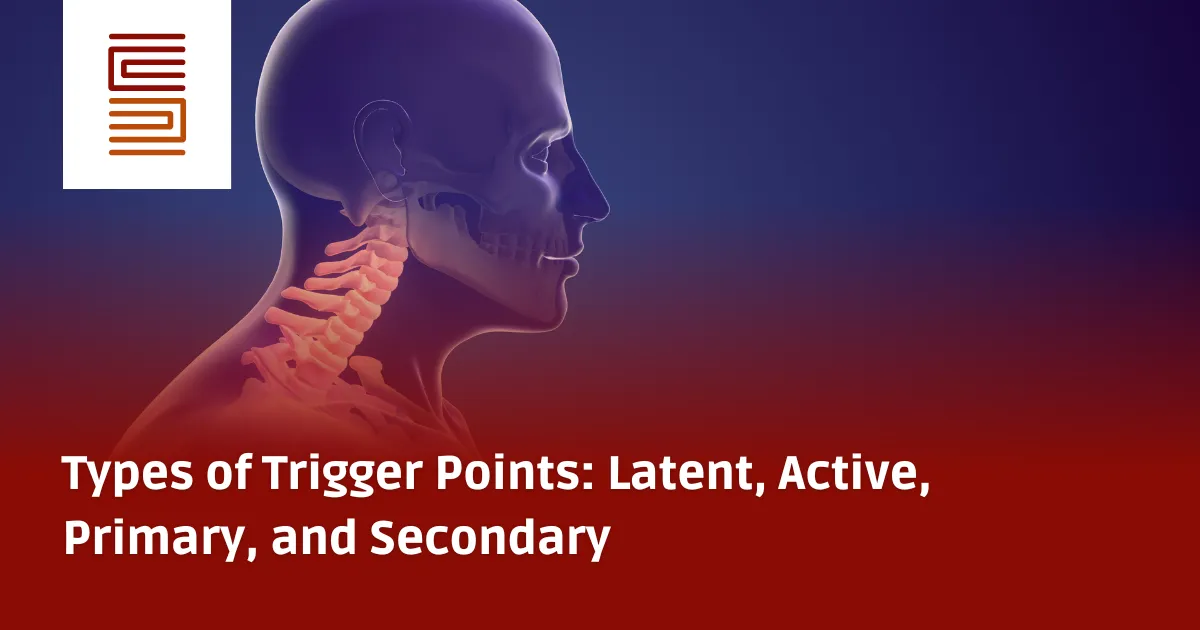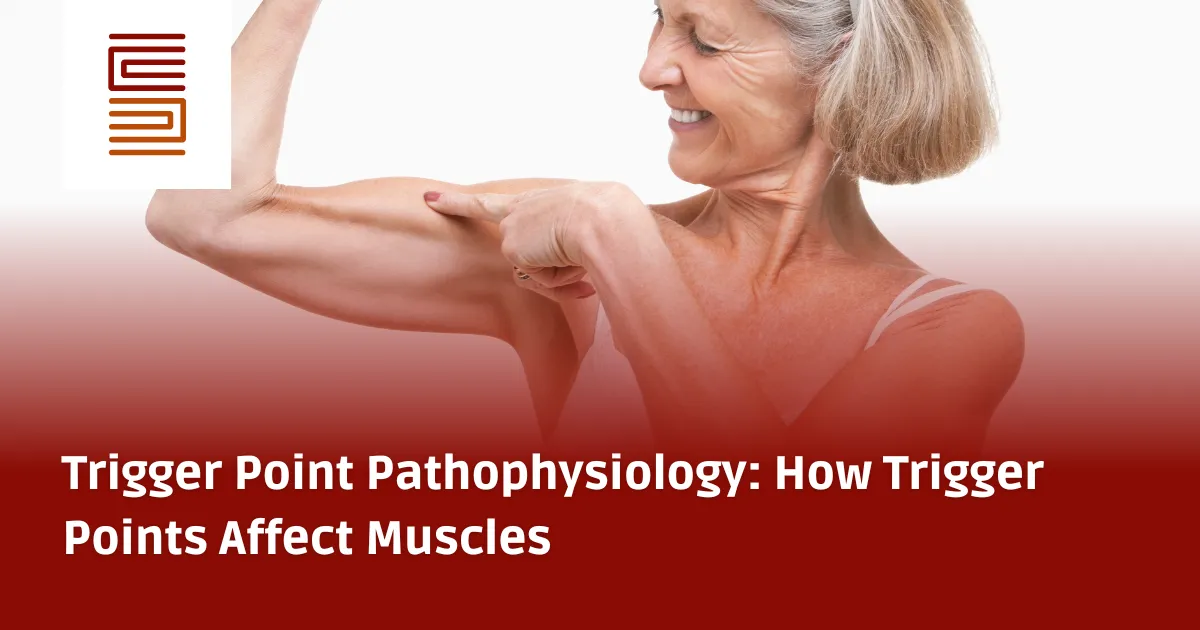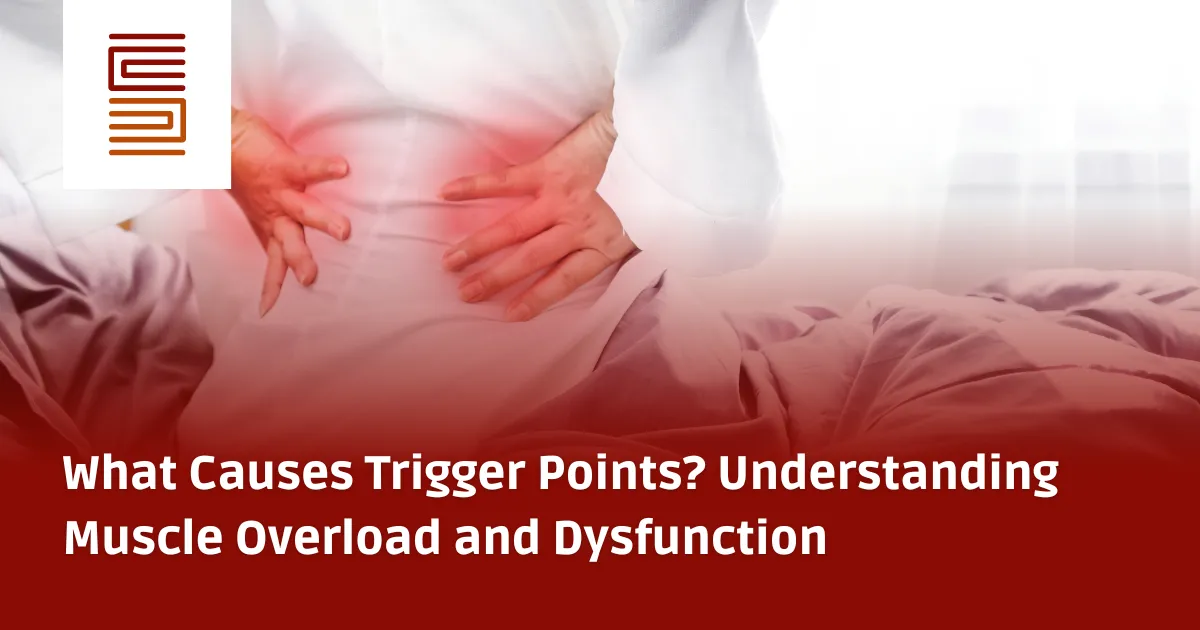Types of Trigger Points: Latent, Active, Primary, and Secondary
Learn about the different types of trigger points, including latent, active, primary, secondary, functional, and satellite trigger points, and how they impact muscle pain and movement.
Understanding the Different Types of Trigger Points
Trigger points are classified based on their activity and impact on muscle function. These classifications help determine the severity of pain, muscle dysfunction, and appropriate treatment strategies.
Trigger points can be categorized into latent and active, with active trigger points further divided into primary and secondary trigger points. Secondary trigger points can be classified into functional and satellite trigger points depending on how they form.
Latent vs. Active Trigger Points
Latent Trigger Points
- Do not cause spontaneous pain but increase muscle tension.
- Become painful only when physically compressed by a therapist or during movement.
- Increase the risk of muscle overload by keeping the muscle in a constant state of tightness.
Active Trigger Points
- Spontaneously produce pain and other neurological symptoms without external pressure.
- Often result from muscular overload, trauma, or chronic stress on muscles.
- Can refer pain to other areas of the body, mimicking conditions like sciatica or joint pain.
- Can worsen over time if left untreated, leading to secondary trigger points.
Primary vs. Secondary Trigger Points
Primary Trigger Points
- Develop from the initial muscle overload or trauma.
- Are directly responsible for the patient’s pain complaint in acute pain conditions.
- Must be treated first, as secondary trigger points often form in response to primary trigger points.
Secondary Trigger Points
- Develop as a result of a primary trigger point’s activity.
- Are common in chronic pain disorders, where muscle dysfunction has persisted over time.
- May be partially or fully responsible for a client’s pain complaint.
Functional vs. Satellite Trigger Points
Functional Trigger Points
- Form due to muscular overload caused by the activity of a primary trigger point.
- Develop from:
- Referred motor activity – The primary trigger point alters movement, causing strain on other muscles.
- Pain-avoiding posture – The body compensates for pain by adjusting posture, leading to tension in other muscle groups.
- Over time, these movement compensations overload another muscle, causing a functional trigger point to develop.
Satellite Trigger Points
- Form within the pain referral zone of a primary trigger point.
- Occur due to a guarding reflex, where surrounding muscles tighten to protect a painful area.
- Often worsen over time as pain radiates to new muscle groups, making diagnosis and treatment more complex.
Why Understanding Trigger Point Types Matters
- Helps determine the root cause of pain.
- Guides targeted treatment to prevent unnecessary therapy on unrelated muscle groups.
- Allows for early intervention before secondary trigger points develop.
- Improves long-term pain management strategies by addressing both primary and secondary trigger points.
Treatment and Prevention of Trigger Points
Managing trigger points effectively requires a combination of self-care, professional therapy, and postural correction.
Self-Care Approaches
✔ Manual Pressure Therapy – Applying gentle pressure to deactivate trigger points.
✔ Stretching and Mobility Exercises – Reducing muscle stiffness and improving flexibility.
✔ Heat and Cold Therapy – Reducing inflammation and relaxing tight muscles.
Professional Treatments
✔ Trigger Point Release Therapy – Hands-on techniques to release chronic tension.
✔ Physical Therapy – Strengthening muscles to correct movement imbalances.
✔ Chiropractic Adjustments – Improving spinal alignment and joint function.
How NMSN Can Help with Trigger Point Therapy
At New Mexico Support Network (NMSN), we offer comprehensive pain management services to help individuals suffering from muscle pain and movement dysfunction.
✔ Home Care Services – Providing support for individuals with chronic muscle pain and mobility limitations.
✔ Hospice Care Assistance – Ensuring pain relief for individuals with terminal conditions.
Take Control of Your Pain Today
Understanding trigger point types and their causes is the first step toward effective pain relief. If you need professional guidance, contact New Mexico Support Network today.
Email: care@nmsupport.com
Phone: +1 833-773-0033 or +1 575-449-2009
Visit: New Mexico Support Network




